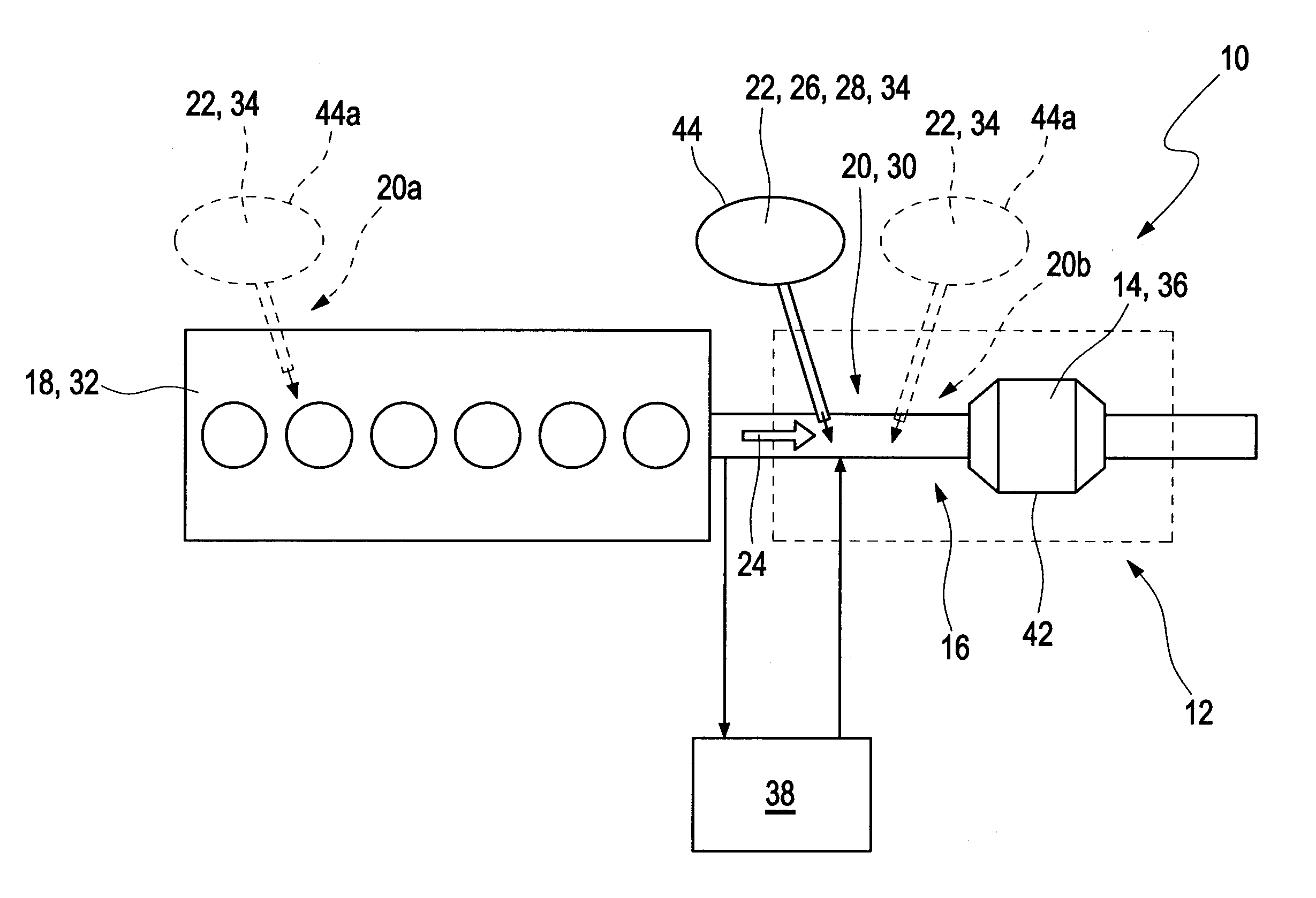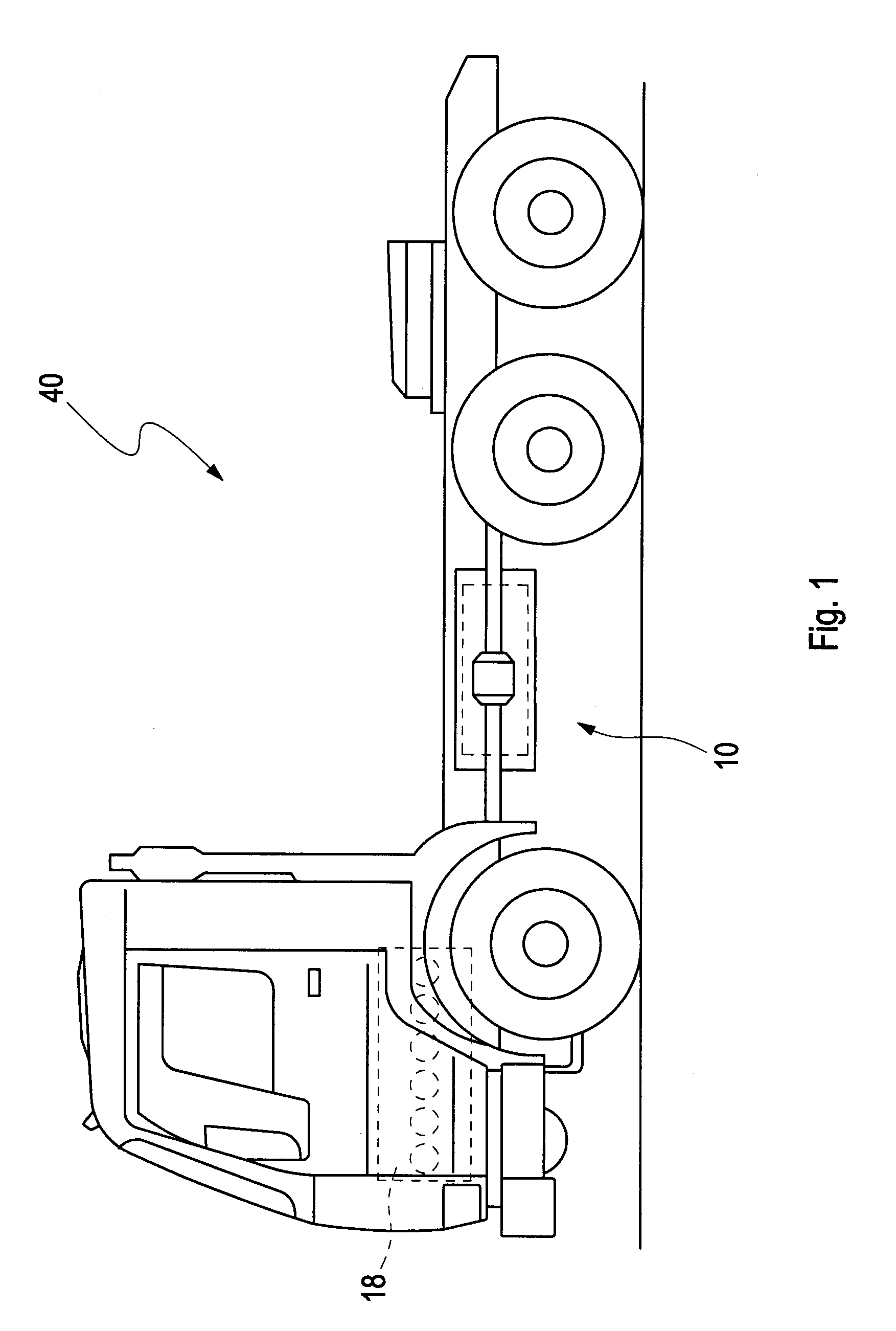Exhaust aftertreatment system where an activator material is added to the reductant fed to the catalytic converter
a catalytic converter and activator material technology, applied in the direction of machines/engines, mechanical equipment, separation processes, etc., can solve the problems of high nox levels, increased particulates, and only possible high engine efficiency, and achieve small nox conversion effect, enhanced catalytic activity, and increased catalytic material efficiency
- Summary
- Abstract
- Description
- Claims
- Application Information
AI Technical Summary
Benefits of technology
Problems solved by technology
Method used
Image
Examples
Embodiment Construction
[0033]In the drawings, equal or similar elements are referred to by equal reference numerals. The drawings are merely schematic representations, not intended to portray specific parameters of the invention. Moreover, the drawings are intended to depict only typical embodiments of the invention and therefore should not be considered as limiting the scope of the invention.
[0034]FIG. 1 depicts schematically a vehicle 40 with a combustion engine 18 and an exhaust gas after treatment system 10 downstream of the combustion engine 18. An example embodiment of the exhaust gas after treatment system is illustrated in detail in FIG. 2.
[0035]The exhaust gas after treatment system 10 comprises a catalytic converter arrangement 12 which is arranged in an exhaust gas path 16 or an exhaust pipe, respectively, downstream of the combustion engine 18, which is embodied as a diesel engine 32. The catalytic converter arrangement 12 comprises a component for reducing a soot content, such as a catalyst f...
PUM
| Property | Measurement | Unit |
|---|---|---|
| temperature | aaaaa | aaaaa |
| temperatures | aaaaa | aaaaa |
| temperature | aaaaa | aaaaa |
Abstract
Description
Claims
Application Information
 Login to View More
Login to View More - R&D
- Intellectual Property
- Life Sciences
- Materials
- Tech Scout
- Unparalleled Data Quality
- Higher Quality Content
- 60% Fewer Hallucinations
Browse by: Latest US Patents, China's latest patents, Technical Efficacy Thesaurus, Application Domain, Technology Topic, Popular Technical Reports.
© 2025 PatSnap. All rights reserved.Legal|Privacy policy|Modern Slavery Act Transparency Statement|Sitemap|About US| Contact US: help@patsnap.com



